When cleaning your kitchen sink, how many times have you been disgusted by the dirt lingering in the sink? Let’s face the fact that no one wants to deal with or touch the leftover food particles caught in the drain. It indicates it is time for you to invest in a sink strainer.
While explaining the importance of sink strainers on the drain, Fobes says it will cost you around an average of $400 for any plumbing repair. However, a clogged drain will cost you 150$ on average or maybe more. After all, it’s not a bad idea to invest in a kitchen sink strainer.
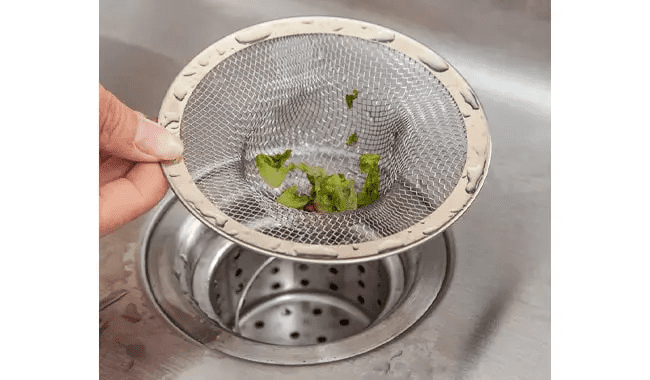
Apart from that, it restricts the movement of cockroaches and other pests coming from the kitchen drain. The small holes in a sink strainer will not allow these pests to appear from the drain, keeping the sink and home clean and pest-free.
Yes, a sink strainer is a vital part of your kitchen sink, but how to choose one that fits your sink? With so many types available, there is a good chance you may be confused or unaware of all the different types available in the market.
Hence, to help you understand these different types and make the right choice, we have compiled all the possible strainers types and stated their pros and cons. But, before getting into the different sink strainer types, let us start with the basics.
What Is a Sink Strainer?
A sink strainer is a perforated metal screen essential for plumbing and drainage systems that allow water to flow freely through the drains without blockages. It is available in a wide array of sizes, designs, and materials.
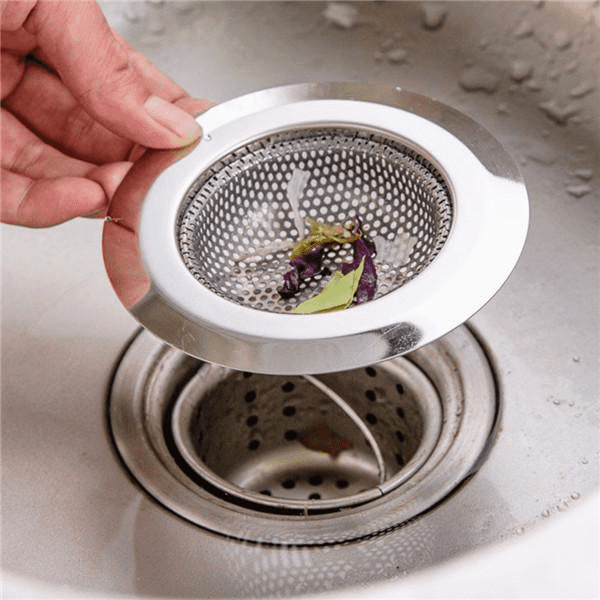
The materials used for making strainers for a kitchen sink are stainless steel, silicone, and plastic. But, plastic is not a recommended option. Following the material, the size becomes crucial while buying a kitchen sink strainer.
Do All Sink Strainers Come in The Same Size?
No, there is no standard size for kitchen sink strainers as it depends upon the diameter of your sink. However, most kitchen sinks need a 3 ½ inches strainer.
Regardless of the material and size available, many types of kitchen sink strainers exist.
14 Types of Kitchen Sink Strainers
There are various sink strainers types available, just like kitchen sinks. The kitchen sink strainer types can be categorized based on design, materials, and attachments.
Therefore, after thorough research, we have come across 14 different kitchen sink strainers.
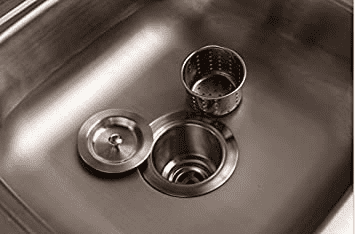
Bonus Read –What Are Kitchen Sinks Made Of?
Based on Design
Back Nut Strainer
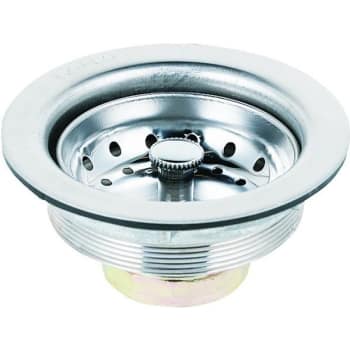
The first type is the Back Nut strainer. With this type, a back nut secures the strainer to the sink while connecting the sink to the plumbing system. It is attached to a rubber gasket to avoid water from draining, and the back nut secures the unit.
Besides preventing water drainage, a back nut type strainer is easy to place in and take out, affordable, and convenient to use.
Double Cup Strainer
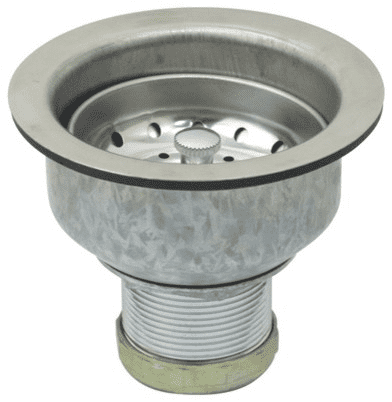
A Double Cup strainer, while showcasing a back nut filter, is a type that has two cups, several rings -steel and rubber. As implied by the name, a double cup strainer has two cups, and the nut is used to secure the second cup in place.
While one cup sits inside the sink, the second can be attached or removed whenever you need to fill and drain the sink. The double cup strainer keeps your drainage system clean and does not let any dirt or debris pass through the drain.
Flange Strainer
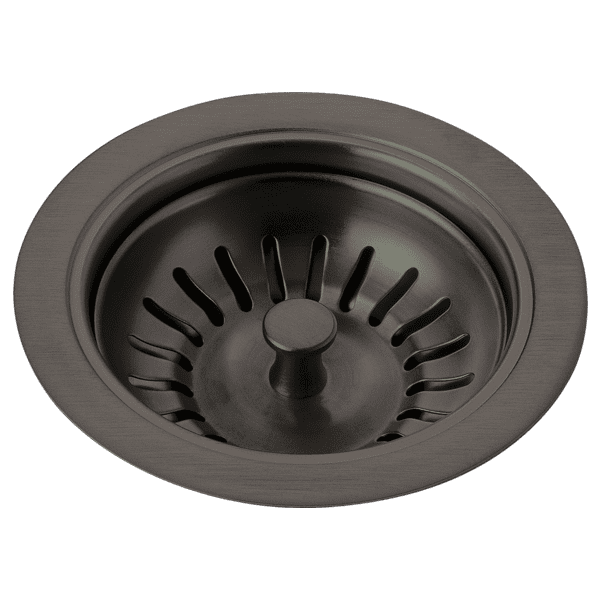
One of the high-priced sink strainers is the Flange strainer. In this type, with a flange, the strainer is connected to the bottom of the sink. Essentially, a flange is more like a rim used as an attachment for securing parts in a plumbing system.
This rim ensures no water leakage. Besides being convenient, you can turn the back nut filter at any angle you choose. In other words, it is an all-in-one strainer that works as a removal, filter, back nut, and water stopper.
Stopper Strainer
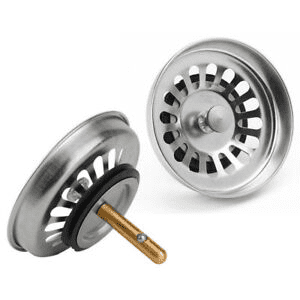
People prefer a stopper strainer over a flange because it is affordable and provides the same function. So far, the only type featuring dual functioning comes with a switch. This switch can turn the sink strainer into a stopper and vice versa.
Once switched on, the stopper strainer resists water from draining down. Additionally, it prevents solid foods or debris from passing through the drain.
Level Strainer

Another type of strainer is the Level strainer. This type is utilized over a sink to avoid drainage when the sink is full. Water remains in place due to the suction by a plastic circular plug. It restricts the flow of water when needed.
Drain Strainer
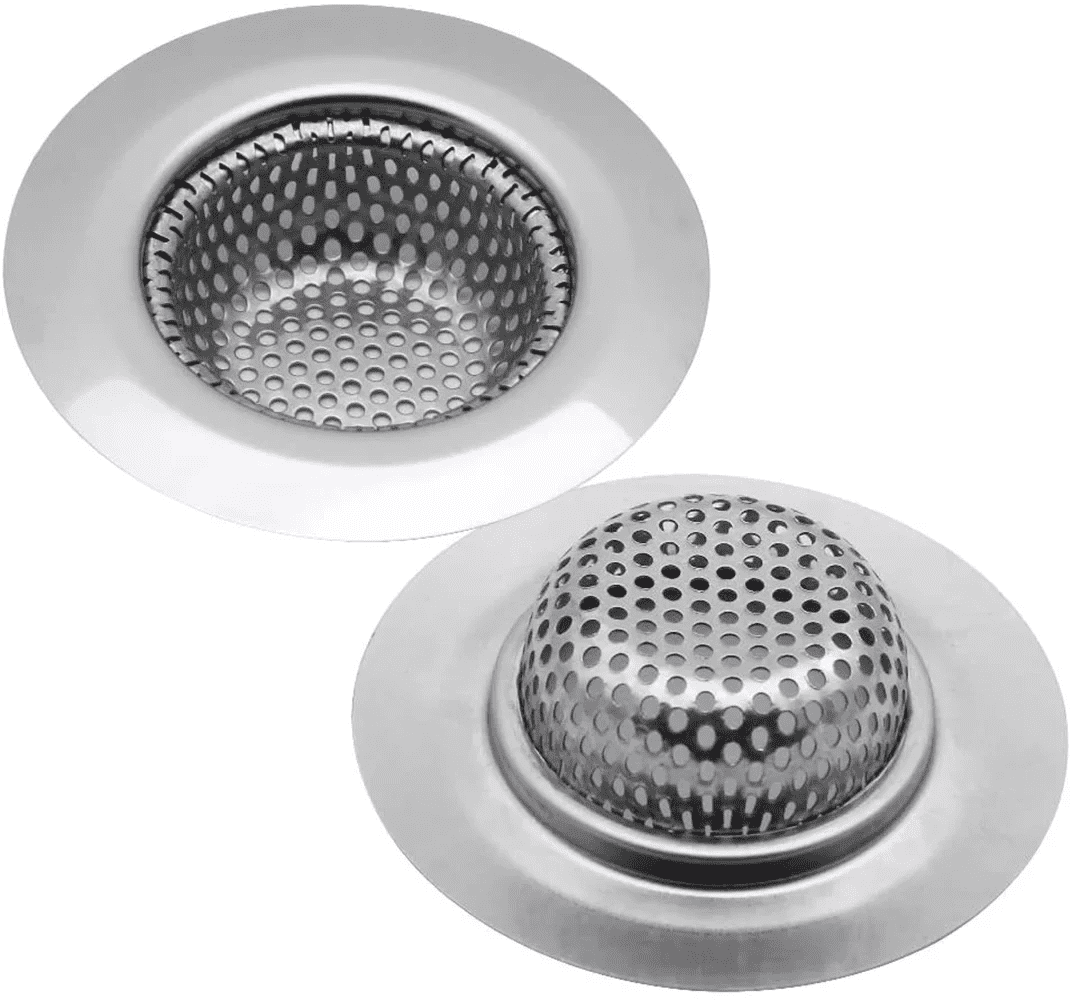
A more practical option than a level strainer is the Drain strainer. The drain strainer is the one that is just needed to be placed in the drain. Apart from convenience, this strainer protects the sink drain by blocking solid dirt, debris, and sludges in it.
In addition, it filters food and creates a smooth passage for drainage without giving rise to black sludge/slime.
Read –How to remove black sludge from your sink drain?
Basket Strainer
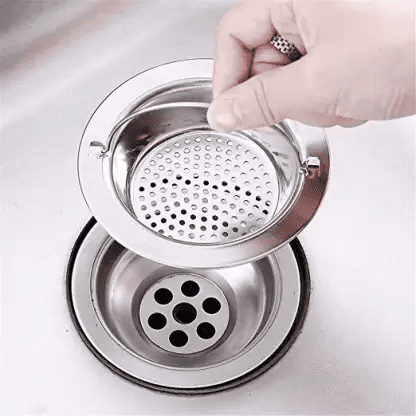
Every sink strainer comes with a cup-shaped basket to collect the food bits and other water. Similarly, the basket-type sink strainer has a cup-shaped basket and a connected handle.
Furthermore, the perforated holes or mesh allow the water to flow down the drain without hassle-free while efficiently trapping food waste and other dirt and preventing clogging. Once the basket is full of debris, the attached handle makes it convenient to remove and clean without getting your hands dirty.
Post-Style Basket Strainer
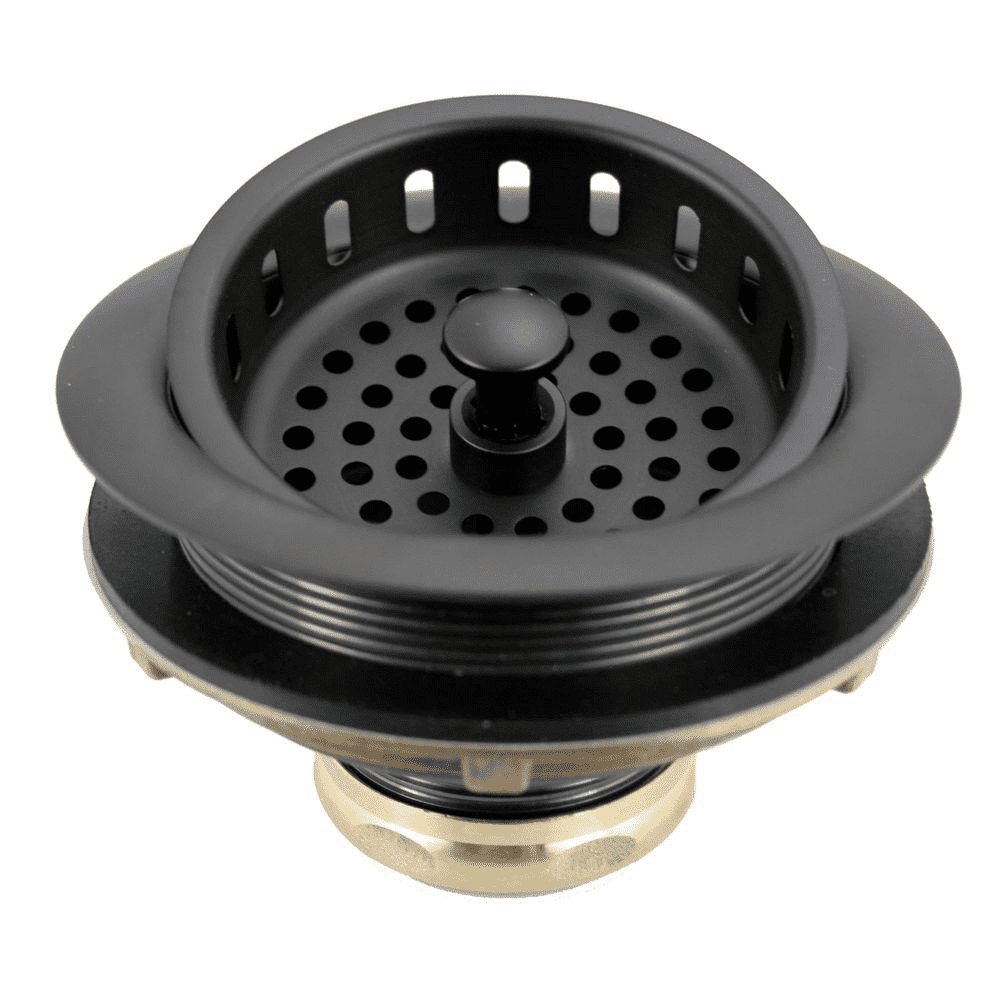
A different type of basket strainer is a post-style strainer. It is also familiar with names -a fixed post or stationary post sink strainers. These types come with a plus and a post in the center of the basket. This post allows the plug to be used and released. As a result, it is a strainer and stopper.
A post-style basket strainer is a sink strainer type whose design enables the basket to be turned open and close when needed to slow the water drain. Along with slowing the water flow, it restricts any dirt or food bits from draining down.
Spring Clip Strainer
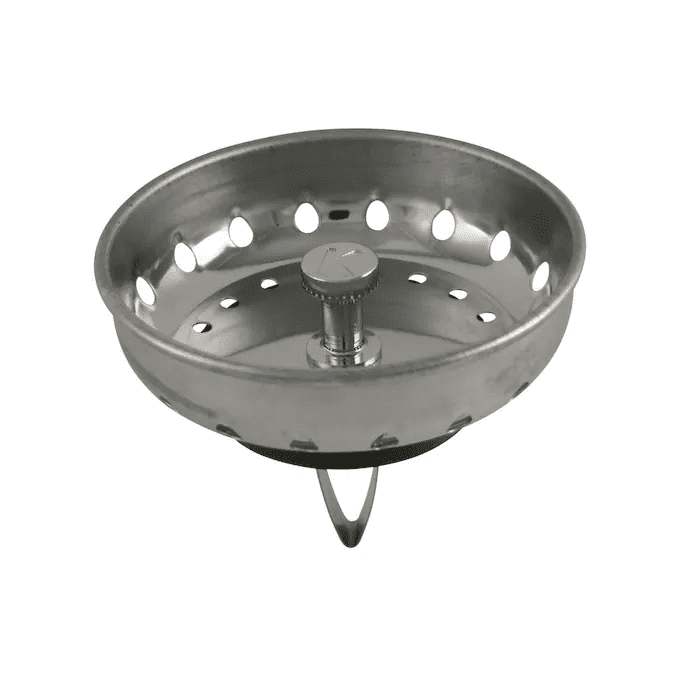
Spring clip sink strainers appear identical to any other post-style basket strainer. Both have a basket and a post in the center of the basket. To release the plug, pull up or push down the center post.
What separates them is how the post functions—to be precise, what it does or does not fit. There aren’t as many complete drain assemblies for this form of the drain as there are for post-style basket strainers.
Furthermore, based on functions, while the spring clip may allow small dirt and debris to pass down the drain, it blocks food bits and prevents clogging.
Spin-Lock Strainer

Adding to the sink strainer type, we have a spin-lock sink strainer, the same as spring-clip strainers. Both of them need the correct type of sink drain. Unlike the sink drain for spring clip, the sink drain supporting spin-lock strainers have a circular opening.
Along with it, an S-curve twist on their post enables the use and release of the plug. Therefore, a spin-lock kitchen sink strainer helps catch the dirt and allows the water to flow without hassle.
Based on Materials
Silicone Strainer
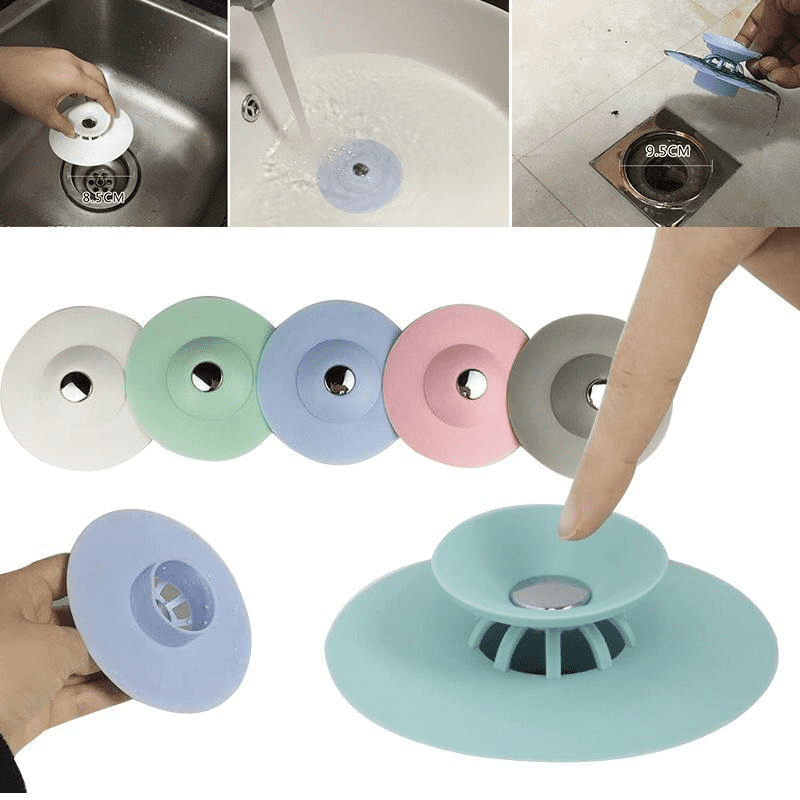
The silicone strainer suits people who don’t want to replace a drain. The wide flange (or the outer lip) rests in the sink drain with a few silicone sink strainers. Usually, silicone, stainless steel, or plastic is used to make this flange.
Besides, some of the sink strainers sit on your sink drain and function as open baskets. Others have a post in the center that inwards the silicone creating a basket strainer over the fly.
Metal Mesh Strainer
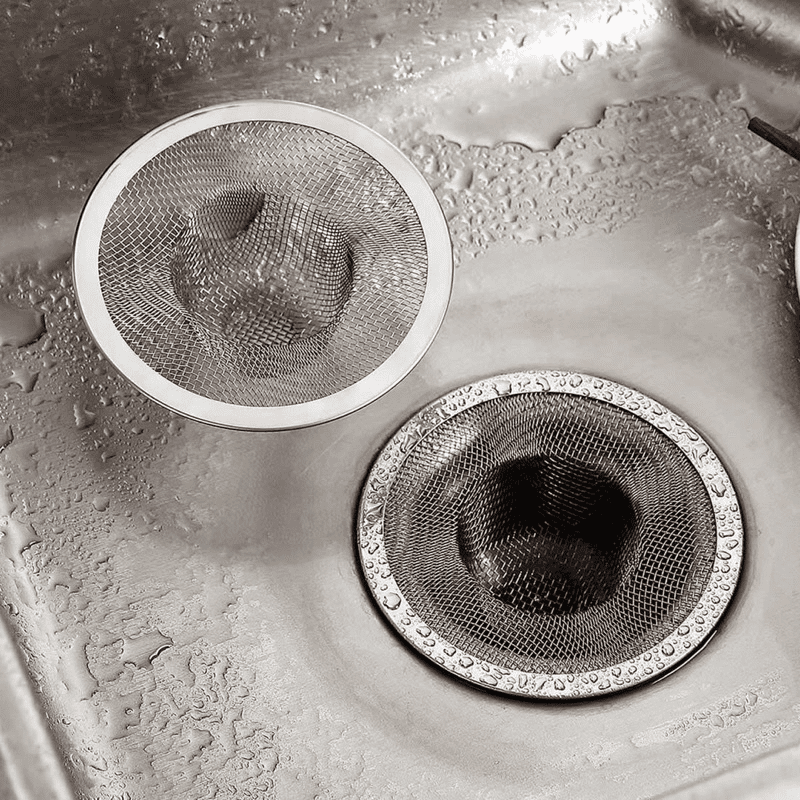
Another type based on the material is metal mesh sink strainers, meaning stainless steel mesh. The design of this mesh strainer makes it simple and convenient to use. You place them on top of your sink drain, and the installation is done. They do not have plugs but only have a few little cup-shaped baskets.
One additional benefit these sink strainers over silicone have is that they come in packs of two or more. Hence, if one becomes greasy, take it out and place another.
Based on Attachment
Bell Washer Attachment Strainer
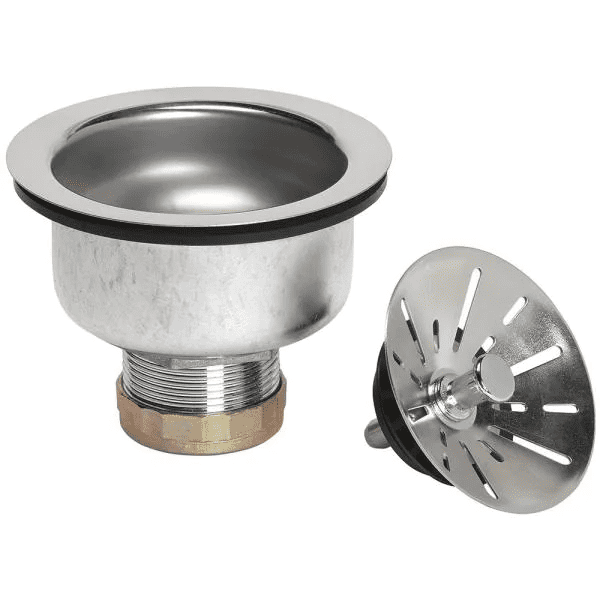
Bell washer attachment strainer is a type of strainer-sink attachment. The cup-shaped bell washer is pushed against the rubber washer with a threaded locknut to attach the strainer to the sink.
To secure the bell washer strainer, you need to fasten it using a pipe wrench.
Locknut Attachment Strainer
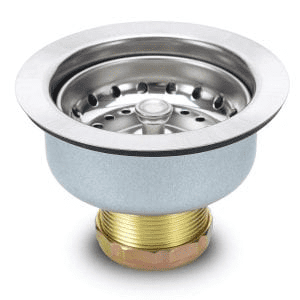
Unlike bell washers, locknut attachment strainers have ring-like threaded locknut that fits the sink drain and gets pressed by friction and a rubber washer against the sink bottom. To fasten the locknut, you can use a pipe wrench (or a special locknut wrench).
These attachment sink strainers prevent clogging and keep food waste or other waste away from the drain.
Final Thoughts
Now, you know all the possible kitchen sink strainers types available in the market and their design, material, and attachments. Installing these sink strainers makes your cleaning easier and hassle-free. In the end, it depends upon your sink and which kind of sick strainer you would think will be perfect for your sink.
Meta description -Want to install a sink strainer? Read to learn about all the 14 kitchen sink strainer types based on design, materials, and attachments.
![How to Unclog the Rv Kitchen Sink?-[9 Proven Methods] How to Unclog the Rv Kitchen Sink?-[9 Proven Methods]](https://houseadorable.com/wp-content/uploads/2022/02/rv.jpg)
![How Does Kitchen Sink Plumbing Works? [Methods Explained] How Does Kitchen Sink Plumbing Works? [Methods Explained]](https://houseadorable.com/wp-content/uploads/2022/03/Plumbing.jpg)

![Can You Put Drano in a Dishwasher? [Answer Explained] Can You Put Drano in a Dishwasher? [Answer Explained]](https://houseadorable.com/wp-content/uploads/2023/04/Article53.Photo1_.Original-250x250.jpg)
![Why Does My Kitchen Sink Smell? [Causes+Solutions] Explained Why Does My Kitchen Sink Smell? [Causes+Solutions] Explained](https://houseadorable.com/wp-content/uploads/2022/10/sink-smell.jpg)
![How Much Does It Cost to Build a Kitchen Island? [Custom Made+DIY] How Much Does It Cost to Build a Kitchen Island? [Custom Made+DIY]](https://houseadorable.com/wp-content/uploads/2022/03/cost-of-kitchen-island.jpg)
![How to Get Rid of Black Sludge in The Sink Drain? [9 Methods] How to Get Rid of Black Sludge in The Sink Drain? [9 Methods]](https://houseadorable.com/wp-content/uploads/2022/01/black-gunk-2.jpg)
![27 Types of Cutting Boards Explained [Buying Guide Included] 27 Types of Cutting Boards Explained [Buying Guide Included]](https://houseadorable.com/wp-content/uploads/2022/12/cutting-board.jpg)